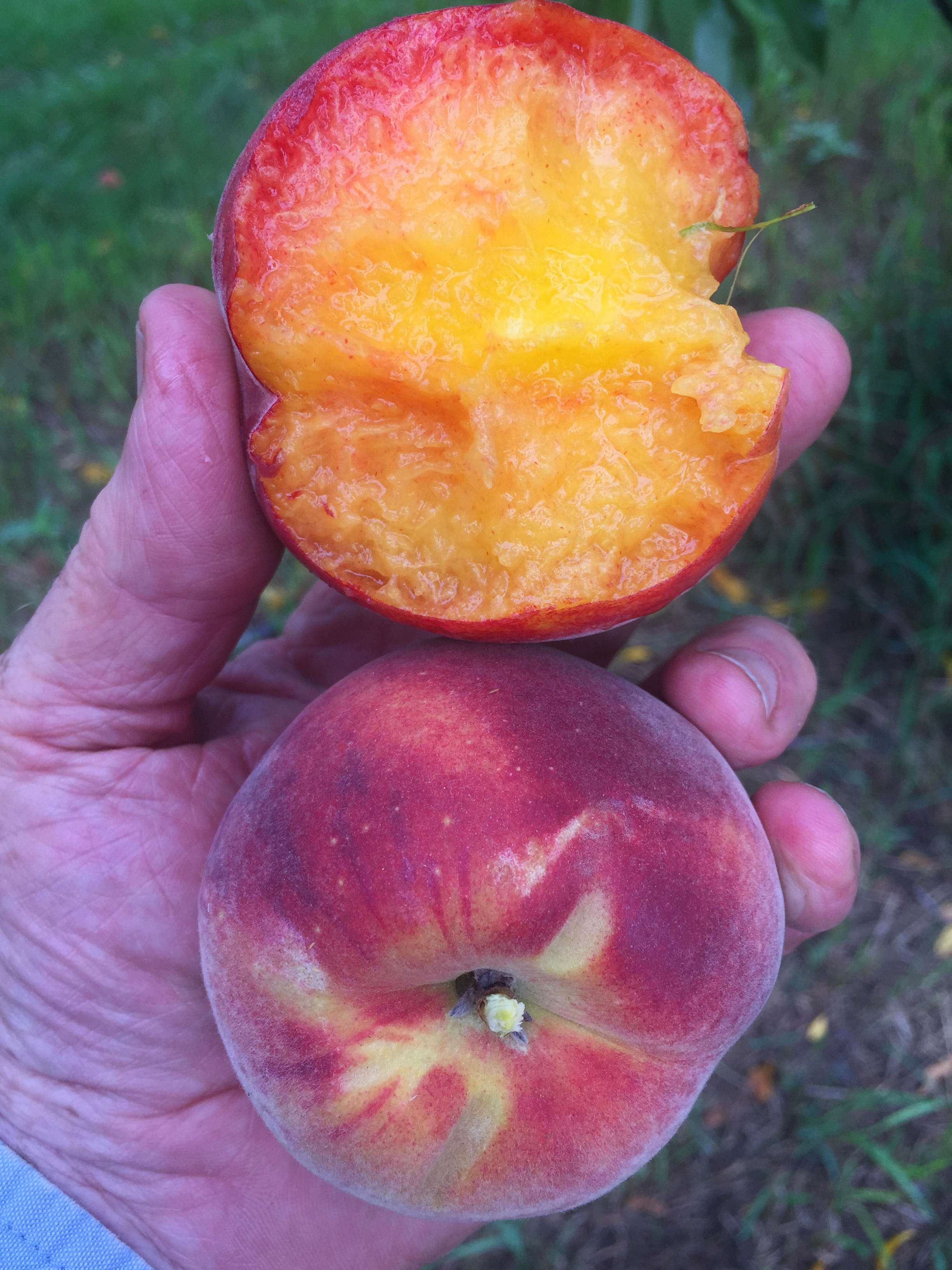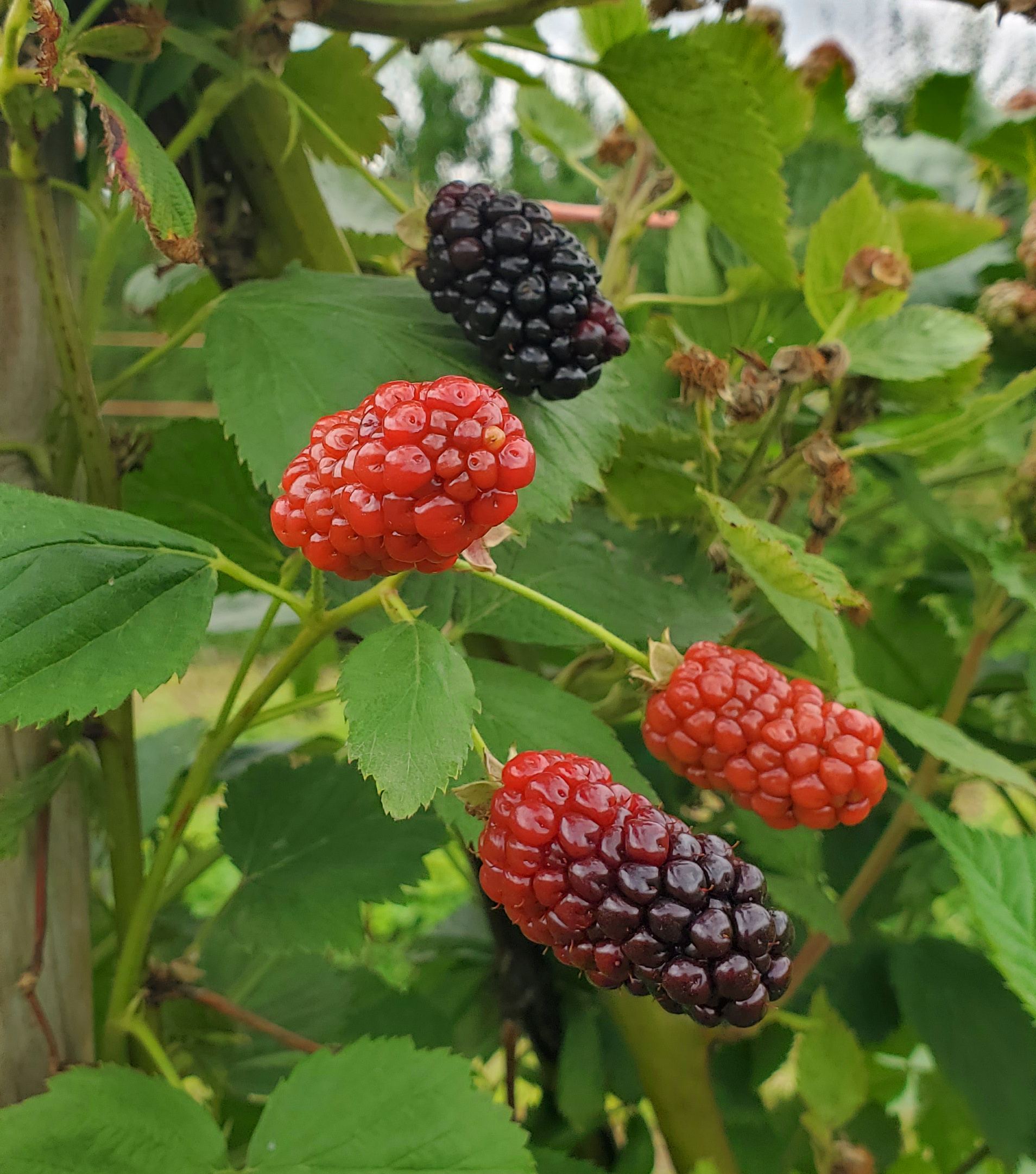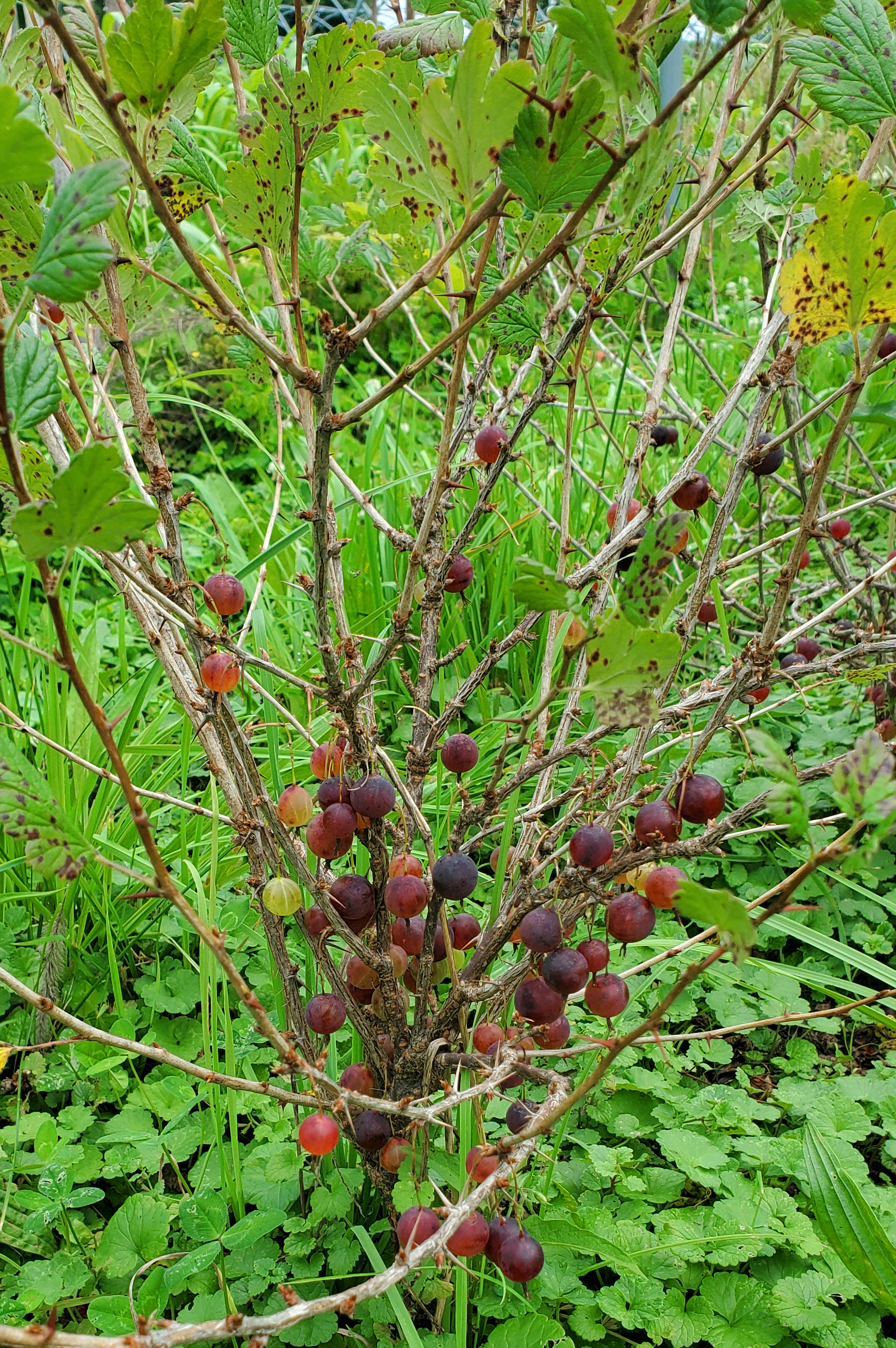Southwest Michigan fruit update – July 13, 2021
Summer fruit harvest continues for berries and tree fruit. Spotted wing Drosophila numbers are starting to climb.

Weather
Last week started warm with highs in the upper 80s and lows in the upper 60s. Tuesday was the warmest day, with lows in the 70s. A cold front brought cooler air late Wednesday. Highs the rest of the week were in the low to mid-70s. Low temperatures were in the 50s. Temperatures climbed back to near 80 by the start of this week. Unsettled conditions brought scattered shower with generally low rain amounts recorded in the past week.
This week will be much like the start of last week. Highs will be near 80, lows will be in the mid 60s. The best chances of rain for the week is on Tuesday and again on Thursday into Friday. Sandy soils are starting to dry out, but still have some moisture from the recent rains. Soil moisture is especially important this time of year. Plants are fully leafed out and July and August are when plants use the most water.
With the seasonal week, we picked up an average number of growing degree days (GDD) last week: 204 GDD base 42 and 148 GDD base 50.
|
Southwest Michigan GDD summary from March 1 - July 11, 2021 | |||
|---|---|---|---|
|
Station |
GDD 42 F |
GDD 45 F |
GDD 50 F |
|
Benton Harbor (SWMREC) |
2094 |
1804 |
1375 |
|
Lawton (Lawton) |
1889 |
1613 |
1207 |
|
Fennville (TNRC) |
2116 |
1823 |
1382 |
|
Average for the SW region |
2067 |
1778 |
1349 |
|
Average last week |
1863 |
1596 |
1201 |
Tree fruit
San Jose scale male trap catch has increased this week in the Trevor Nichols Research Center trapline, perhaps signaling the start of the flight of the next generation. Crawlers from the first generation started showing up about three weeks ago. San Jose scale damage from these crawlers is beginning to be reported. Japanese beetle populations are still increasing in some areas.
Apricot harvest continues in the area. Ripening fruit has increased susceptibility to brown rot.
Early season peach and nectarine varieties Desiree, Earlystar and Harrow Diamond are ripe in some sites. Earlier hot weather has caused some red in the flesh in some varieties with dark red skin color. Fruit seem to be prone to drop this year. Some leaf drop from bacterial spot can be seen. The most common insect problems affecting fruit now are oriental fruit moth and tarnished plant bug. Current rains and warm temperatures increase susceptibility to brown rot.

In cherries, tart cherry harvest is mostly done. Spotted wing Drosophila (SWD) catches are increasing as well as numbers of larvae found in unprotected fruit. Cherry leaf spot is favored by recent rains.
In plums, Early Golden and Methley harvest is underway. Shiro harvest will begin soon. Plums are generally not susceptible to spotted wing drosophila until the fruit are noticeably soft.
Young apple tree decline due to last year fire blight infection is being accelerated by warm weather. Sooty blotch and flyspeck infection on fruit is favored by wet conditions. Flight of codling moth and oriental fruit moths is continuing. Codling moth entries are becoming easier to see as the larvae get larger and push more frass out. Trevor Nichols Research Center has reported catching apple maggot at low levels in the past three weeks.
Small fruit
SWD numbers are now starting to increase. In statewide trapping being done by the Michigan State University Extension fruit team, surprisingly low numbers of male SWD are being caught. Catches are mainly females. Growers doing their own trapping should be on the lookout for female flies. They are harder to see but will be a better indicator of rising populations this year. Check out this SWD guide for identification.
Grape fruit size is increasing. Labrusca grapes are at bunch closure. Many hybrid wine grapes are already at berry touch or bunch closure. Vinifera grapes are at buckshot berry to berry touch, depending on variety and site. We passed the point last week where Concord berries are calculated to be at half their final berry weight. Now is the time to estimate final crop yields and adjust the crop if necessary.
For grape berry moth, May 25-27 can be used as general dates for wild grape bloom in southwest Michigan. This is used for determining grape berry moth biofix. According to the grape berry moth model on Enviroweather, egglaying of the second generation should have begun between June 30 and July 3, depending on location.
Protectant fungicide sprays to control Phomopsis, black rot, downy mildew and powdery mildew are the management focus for the month after bloom. Downy mildew symptoms were found in wild grapes. These wet humid conditions are excellent for this disease. Black rot symptoms have been found in fruit. For labrusca grapes, we are nearing the end of the period when fruit are susceptible to infection but hybrids and vinifera are susceptible for several more weeks. Wine grape growers will also want to include botrytis in their disease management plans near bunch closure to ensure fungicide residues are in the interior of the cluster.
Blueberry harvest is moving from early season varieties to early midseason varieties like Bluecrop. With all this rain, disease control should focus on protecting green fruit from anthracnose and alternaria. Anthracnose fruit infection have been reported from harvesting growers. Wet conditions are excellent for this disease. Protecting green fruit is easier than stopping infections on blue ripening fruit. SWD numbers have been slow to increase but are starting up now. The early lag was probably due to the hot dry conditions in May and early June. The cooler humid weather increases populations, and many wild berries that are now ripening near field edges. If you are not trapping for SWD, sample early ripening fruit to determine with treatment is necessary in fields where not enough fruit is ripe to justify harvest.
Michigan State University is participating in a USDA-funded survey asking blueberry growers about their pollination practices. If you can, please take a few minutes to fill out the survey.
Strawberry renovation is underway on most farms. This should be done as soon as you can work in the field.
Raspberry harvest continues with the harvest of both red and black raspberries. Blackberry harvest will start soon. Fruit is sizing and coloring. SWD larvae are being found in unsprayed backyard fruit. SWD catches in monitoring traps are beginning to increase.

Miscellaneous crops
Chestnut bloom is ending.
Hazelnut fruits are beginning to expand.
Currant harvest continues.
Gooseberry harvest will begin soon.
Cranberries bloom has ended and fruit are sizing.

Upcoming meetings
Viticulture Field Day will be returning to an in-person event this year. The event location is 12 Corners Winery on July 28, 2021. This will be an all-day event. Check in opens at 8 a.m., presentations start at 9 a.m. The traditional steak dinner and wine tasting will return. There will be limited attendance. Pre-registration is highly recommended.
Related articles
- Southwest Michigan fruit update – July 6, 2021
- Summer options for controlling San Jose scale in Michigan tree fruit crops
- Michigan grape scouting report – July 7, 2021
- Pest management approaches in a winter or freeze damaged grape vineyard
- Banning black rot and Phomopsis from young grape clusters
- Renovate perennial strawberry fields to maximize yield next year



 Print
Print Email
Email


